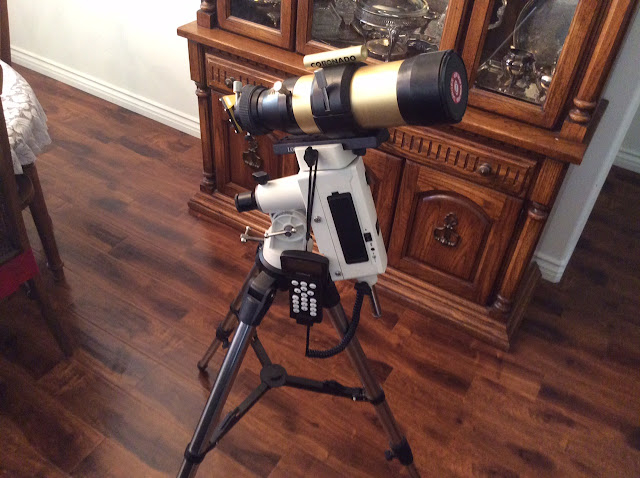The measured distance to the very close in star (shown in the previously displayed enlarged image) was re computed to be 16 arc. My previous estimate was
based on faulty understanding of what Photoshop was displaying when the "show pixels" button was selected. It turns out the pixel display was displaying the image as if it were 1000 pixels by 667 pixels rather than the real pixel size of my camera, which is 5184 x 3456. Once this correction factor was applied the measured distance was recomputed to be 16 arc seconds. This means that the close in star, which previously was though to be Polaris Aa, is not that at but instead Polaris B, which is listed as being about 18 arc seconds from Polaris A.
So, I guess science and calculation wins out over guessing and assuming. Furthermore, this explains why the Wikipedia page showed the image of Polaris Aa taken from the Hubble telescope. Polaris Aa must be much, much closer to Polaris and can't be R evolved with a small scope
Now at the end of this year, lets recollect a little bit of observatory history. Palmia Observatory was started on June 5 with the acquisition of the 8 inch scope. This scope turned me from just an armchair cosmologist to a real observing astronomer as well as a cosmologist. The observatory groups include the patio, the front porch, the parking lot, and the favorite location the tennis courts. Other observing has been done at Anza, Blackstar canyon, Julian, Owens Valley and the OC Heritage Museum. The astro photos below show some of the equipment and staff.
The newest addition of observatory equipment includes a brand new Coronado solar telescope with a goto polar aligned tripod mount. See below.
 |
| Coronado Solar Scope on Ioptron Mount (Source: Palmia Observatory) |
As soon as I finish reading the manuals ( yes, it's a little embarrassing to announce that I am reading the manuals) we will have our first look at the sun's hydrogen alpha spectrum through that scope. The other resident astronomer, Peggy, and astronomers' assistant, Danny, complete the observatory staff, and are eager to begin the new year of observing.
 |
| Resident Astronomer Peggy and Astronomer Assistant Danny (Source: Palmia Observatory) |
Happy new year to everyone!
If you are interested in things astronomical or in astrophysics and cosmology
Check out this blog at www.palmiaobservatory.com

No comments:
Post a Comment